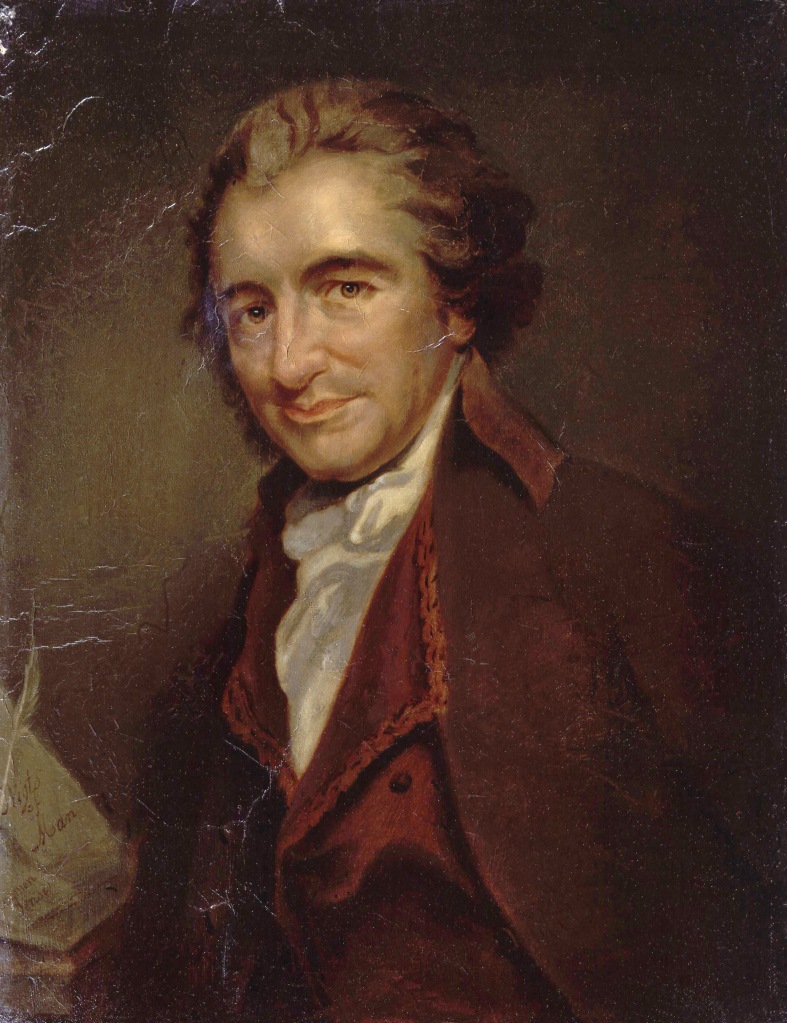
1776: Paine’s Crisis
ESSENTIAL QUESTION
Which rhetorical devices does Thomas Paine use to rouse American morale in the face of military defeat?
CONTEXT
On December 19, 1776, Thomas Paine (1739-1809) published The American Crisis, a pamphlet sold on the street of Boston opposite the Court House. This was the first of a 13-part pamphlet series he published between 1776 and 1783.
1776 had been a difficult year for the American Army. After the announcement of the Declaration of Independence in July, August brought military defeats and the British captured New York City. Over 60% of Washington’s troops had left the Army, been killed or captured, and enlistments for many of those who remained were due to expire in just 13 days, on December 31. Morale was low and it appeared the Army might evaporate.
Thomas Paine was well-known for his literary support of the American Revolution. He had written another pamphlet, Common Sense, in January, 1776; it sold over 100,000 copies in the first three months, and it helped explain the necessity of the American Revolution. Now, as the American troops retreated from New York City, Paine, who was with the Army, again began to write. He penned The American Crisis to stir American patriotism and improve morale, and General Washington ordered this new pamphlet to be read to all his men. Drawing courage from Paine’s words, the Continental Troops crossed the Delaware River and defeated Hessian troops at Trenton on Christmas night. This victory helped breathe new life into the American cause.
This excerpt is from the introduction to The American Crisis.
TEXT
THESE are the times that try men’s souls: The summer soldier and the sunshine patriot will, in this crisis, shrink from the service of his country but he that stands it NOW, deserves the love and thanks of man and woman. Tyranny, like hell, is not easily conquered; yet we have this consolation with us, that the harder the conflict, the more glorious the triumph. What we obtain too cheap, we esteem too lightly;-‘Tis dearness only that gives everything its value. Heaven knows how to set a proper price upon its goods; and it would be strange indeed, if so celestial an article as Freedom should not be highly rated...
INQUIRY
- How does Paine construct his opening sentence as an appeal to ethos?
- Identify three examples of consonance (repetition of consonant sounds) in the first sentence. What is the effect of using this device, both when reading the pamphlet and when hearing it read in public?
- Identify the antithesis in the second sentence. What is the effect of this comparison?
- According to Paine, what gives things value? Do you agree? Why or why not?
- What does Paine consider to be a highly rated article? How do you know?
- Paine speaks of both heaven and hell in this section. What type of appeal is this? What is the effect?
- What imagery does Paine use in this excerpt? Cite at least three examples and give the effect of each.
- Which do you think is the most important sentence in this excerpt? Why?
- Do you agree with Paine’s reasoning? Why or why not?
- With this pamphlet and the American victory that followed, momentum in the American Revolution shifted toward the Americans. What is the importance of momentum in any type of contest, for instance a sports game? Give examples.
ADDITIONAL RESOURCES
https://www.loc.gov/resource/rbpe.03902300/?st=text
https://constitutioncenter.org/blog/how-thomas-paines-other-pamphlet-saved-the-revolution